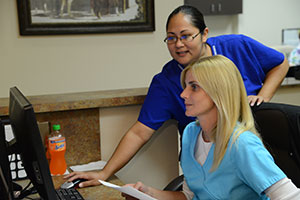| |
Exer cising Your Pelvic Muscles cising Your Pelvic Muscles
Why Exercise Pelvic Muscles?
Life's events can weaken pelvic muscles. Pregnancy, childbirth and being overweight can do it. Luckily, when these muscles get weak, you can help make them strong again.
Pelvic floor muscles are just like other muscles. Exercise can make them stronger. Women with bladder control problems can regain control through pelvic muscle exercises, also called Kegel exercises.
Pelvic Fitness in Minutes a Day
Exercising your pelvic floor muscles for just five minutes, three times a day can make a big difference to your bladder control. Exercise strengthens muscles that hold the bladder and many other organs in place.
The part of your body including your hipbones is the pelvic area. At the bottom of the pelvis, several layers of muscle stretch between your legs. The muscles attach to the front, back and sides of the pelvis bone.
Two pelvic muscles do most of the work. The biggest one stretches like a hammock. The other is shaped like a triangle. These muscles prevent leaking of urine and stool.
How Do You Exercise Your Pelvic Muscles?
- Find the right muscles.
 This is very important. Your doctor, nurse or physical therapist will help make sure you are doing the exercises the right way. This is very important. Your doctor, nurse or physical therapist will help make sure you are doing the exercises the right way.
- You should tighten the two major muscles that stretch across your pelvic floor. They are the "hammock" muscle and the "triangle" muscle. Here are three methods to check for the correct muscles.
- Try to stop the flow of urine when you are sitting on the toilet. If you can do it, you are using the right muscles.
- Imagine that you are trying to stop passing gas. Squeeze the muscles you would use. If you sense a "pulling" feeling, those are the right muscles for pelvic exercises.
- Lie down and put your finger inside your vagina. Squeeze as if you were trying to stop urine from coming out. If you feel tightness on your finger, you are squeezing the right pelvic muscle.
- Don't squeeze other muscles at the same time. Be careful not to tighten your stomach, legs or other muscles. Squeezing the wrong muscles can put more pressure on your bladder control muscles. Just squeeze the pelvic muscle. Don't hold your breath.
- Repeat, but don't overdo it. At first, find a quiet spot to practice—your bathroom or bedroom—so you can concentrate. Lie on the floor. Pull in the pelvic muscles and hold for a count of three. Then relax for a count of three. Work up to 10 to 15 repeats each time you exercise.
- Do your pelvic exercises at least three times a day. Every day, use three positions: lying down, sitting and standing. You can exercise while lying on the floor, sitting at a desk or standing in the kitchen. Using all three positions makes the muscles strongest.
- Be patient. Don't give up. It's just five minutes, three times a day. You may not feel your bladder control improve until after three to six weeks. Still, most women do notice an improvement after a few weeks.
- Exercise aids. You can also exercise by using special weights or biofeedback. Ask your health care team about these exercise aids.
- Hold the Squeeze 'til After the Sneeze
- You can protect your pelvic muscles from more damage by bracing yourself.
- Think ahead, just before sneezing, lifting or jumping. Sudden pressure from such actions can hurt those pelvic muscles. Squeeze your pelvic muscles tightly and hold on until after you sneeze, lift or jump.
- After you train yourself to tighten the pelvic muscles for these moments, you will have fewer accidents.
My Pelvic Muscle Exercise Log
Print out this chart and record your pelvic muscle exercises.
Additional Resource
National Kidney and Urologic Diseases Information Clearinghouse
National Institute of Diabetes and Digestive and Kidney Diseases
3 Information Way
Bethesda, MD 20892-3580
E-mail: nkudic@info.niddk.nih.gov
[Top]
Quick navigation links:
What is a Urology Center | Urologist | Urology Conditions | Urology Services | Resources for Health | Contact Urology Center in North Texas | Sitemap | Home
Disclaimer:
The pictures displayed in www.TexasUrology.com are images of actual patients and employees who have consented to have their picture in this website.

Website Design & Educational Content © Copyright 2023 MedIngenuity, LLC
Medingenuity develops content-rich educational web sites for urologists and urology group practices.
|
|